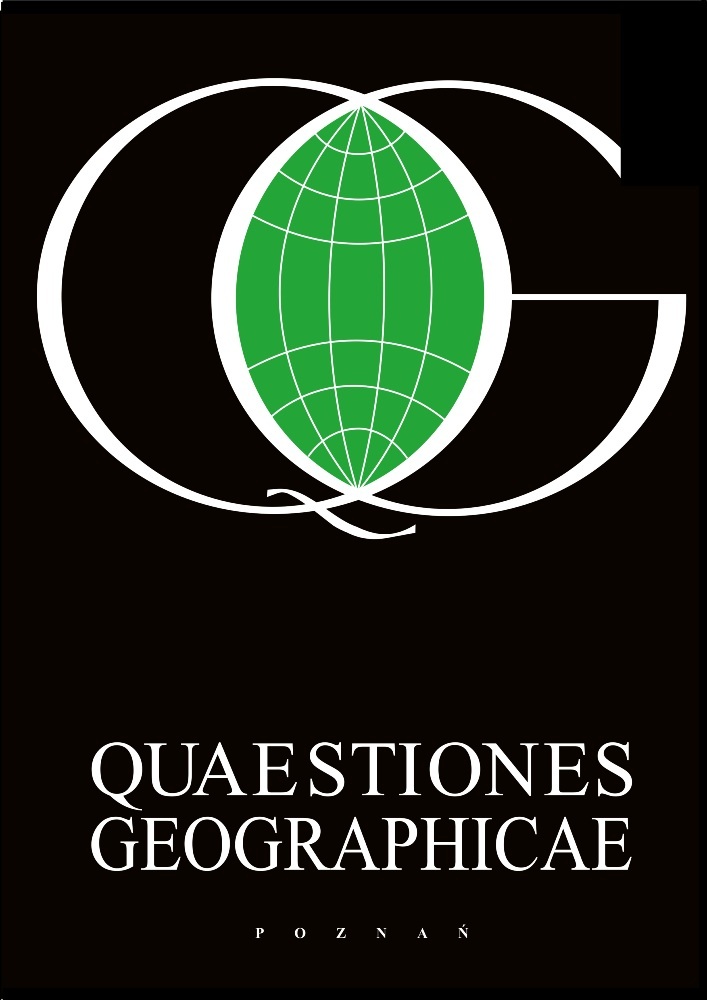Abstract
Transborder co-operation is shaped by many factors and thus takes various forms on particular bor-ders. Within the same formal-legal arrangements under Interreg Programmes, the greatest role in the diver-sification of co-operation was played by non-system-related conditions specific to particular border regions. To identify what specifically drives co-operation, the nature of Polish-German and Polish-Czech transborder co-operation was compared. On the basis of the research conducted, it can be said that the existence of similar conditions on both sides of the border may define specific directions of co-operation and hence be called an inte-grating factor. Coupled with relatively weak barriers, this integrating factor may exert a powerful influence on the development and character of transborder co-operation. Thus, in the process of shaping co-operation policy it is crucial to identify the existing integrating factor (or to define the possibilities of creating it) and to limit the impact of co-operation barriers.
References
Anderson J. & O'Dowd L., 1999. Borders, border regions and territoriality: Contradictory meanings, changing significance. Regional Studies, 33 (7): 593-604.
Belof M., Mironowicz I., Mlek M., Zipser T. & Polański T., 2008. Uwarunkowania rozwoju przestrzennego Polski wynikające z sąsiedztwa z republiką Czech (Determinants of spatial development of Poland resulting from the neighbourhood of the Czech Republic). Ekspertyzy do KPZK 2008-2033, t. III, Ministerstwo Rozwoju Regionalnego, Warszawa: 233-274.
Church A. & Reid P., 1996. Power, international networks and competition: The example of cross-border co-operation. Urban Studies, 33 (8): 1297-1318.
Ciok S., 2004. Pogranicze polsko-niemieckie. Problemy współpracy transgranicznej (Polish-German borderland. The issues of cross-border co-operation). Wydawnictwo Uniwersytetu Wrocławskiego, Wrocław.
Dołzbłasz S. & Raczyk A., 2007. New versus old cross-border co-operation programmes in the example of Polish-Czech and Polish-German border areas. Europa XXI, 16, Regional development in Central Europe - cohesion or competitiveness, IGiPZ PAN, PTG, Warszawa: 153-165.
Dołzbłasz S. & Raczyk A., 2010. Współpraca transgraniczna w Polsce po akcesji do UE (Transborder co-operation in Poland after accession to the EU). Wolters Kluwer Polska, Warszawa.
ESPON Atlas. Mapping the structure of the European territory. 2006, Bonn.
Harfst J., Wirth P. & Lintz G., 2009. Scientific concept of the ReSOURCE Project - "Roadmap", 2010. Leibniz Institute of Ecological and Regional Development, Dresden.
Jańczak J., 2008. Polsko-niemieckie regiony transgraniczne i miasta transgranicze po 2004 roku. Pomiędzy pragmatyzmem instytucjonalnym a izolacją społeczną (Polish-German transborder regions and towns after 2004. Between institutional pragmatism and social isolation). In: Dołzbłasz S. & Raczyk A. (eds), Przekształcenia regionalnych struktur funkcjonalno-przestrzennych. Europa bez granic - nowa jakość przestrzeni. Wrocław, Instytut Geografii i Rozwoju Regionalnego Uniwersytetu Wrocławskiego, 2008: 93-100.
Krätke S., 2002. The regional impact of EU eastern enlargement: A view from Germany. European Planning Studies, 10 (5): 651-664.
Perkmann M., 1999. Building governance institutions across European borders. Regional Studies, 33 (7): 657-667.
Spierings B. & van der Velde M., 2008. Shopping, borders and unfamiliarity: Consumer mobility in Europe. Tijdschrift voor Economische en Sociale Geografie, 99 (4): 497-505.
Stryjakiewicz T., 1998. The changing role of border zones in the transforming economies of East-Central Europe: The case of Poland. Geo Journal, 44 (3): 203-213.
Van Houtum H., 1999. Internationalisation and mental borders. Tijdschrift voor Economische en Sociale Geografie, 90 (3): 329-335.
License
This content is open access.
